Like most of the “In Depth” articles in this website this is very long and boring dissertation. Only read on if one needs to take a nap.
Aquarium UV in Greater Depth
“UV” is short for ultraviolet. It is a type of light.
UV light is electromagnetic radiation with wavelengths shorter than visible light. UV can be separated into various ranges, with short-wavelength UV (UVC) considered “germicidal UV”. At certain wavelengths, UV is mutagenic to bacteria, viruses and other microorganisms. Particularly at wavelengths around 230 nm–280 nm, UV breaks molecular bonds within microorganismal DNA, producing thymine dimers that can kill or disable the organisms.
Per Wikipedia:
UV units for the aquarium have bulbs which give out the UVC that Wikipedia is talking about. This UVC kills (technically it just sterilizes) organisms like green algae, bacteria, protozoans and the infectious stages of ich (“trophonts”). It can kill almost anything which passes through the unit. It does nothing to anything which does not pass through the unit in the water column. So filamentous algae on decorations in the aquarium won’t be killed.
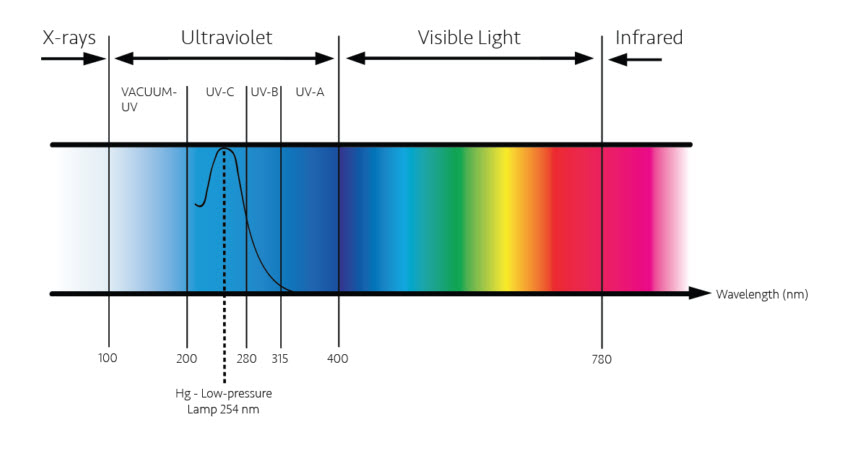

What the Pros Use
University research facilities (there are 460 huge zebrafish facilities for genetic research) and public aquariums uniformly all make use of very large and powerful UV units. They do this because of the proven results of UV units. The profit motive is always very revealing.
One of the big box pet stores’ (PetSmart) uses very large and powerful UV units in its centralized filtration system. They wouldn’t go to this costly effort if it weren’t effective.
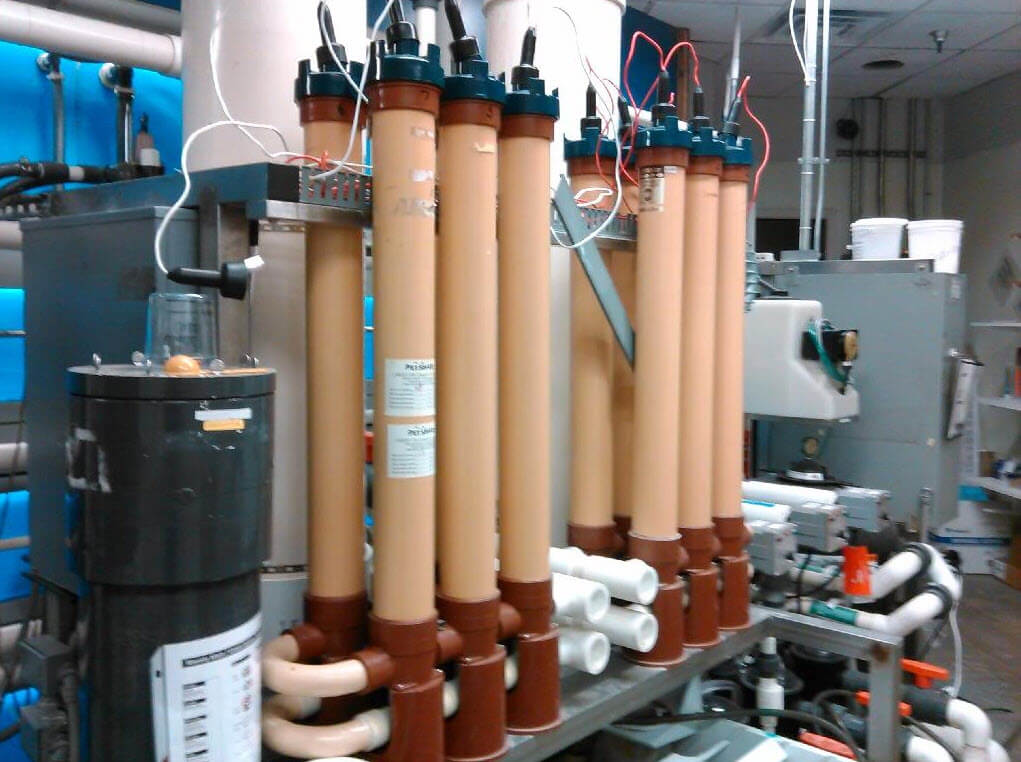
Sizing the Unit
Most experts recommend one watt of UV per three gallons of aquarium for bacteria and one watt per one gallon for ich. This is incorrect. For most aquariums one watt per ten gallons of aquarium is fine for both bacteria and ich.
UV exposure rates are determined for single pass sterilization with drinking water UV units. The testing data for this application is then applied to aquariums. This is simply incorrect (unless one wants to maximize profits!). In an aquarium the water passes through a UV unit many times per hour, making aquariums different, much different.
Multiple small doses of radiation via fast flow rates are just as effective as one large dose of radiation via a slow flow rate (“The Reciprocity Rule in Photobiology – a Review”, Schindl, et. al. University of Vienna Medical School 2001). This means residence time is irrelevant and splitting the flow before a UV unit to increase residence time is ineffective.

For bacteria and algae, a UV unit should, by conventional wisdom, be rated one watt for every 18 gallons per hour flow in the aquarium. By conventional wisdom, to kill parasites such as ich this level needs to be three times that, on the order of one watt of UV for every six gallons per hour of water flow in the aquarium (some even say one watt for every three gallons of flow per hour).
Most commentators on social media and manufacturers then recommend one watt of UV per three gallons of aquarium for bacteria and one-watt UV per one gallon of aquarium for protozoans like ich (“Compare UV Sterilizers”. Drs. Foster & Smith Educational Staff). This is incorrect in the home aquarium because of the “Reciprocity Rule in Photobiology”.

All the research on the wattage requirements of UV is based on the sterilization of drinking water. The UV sizing “rule” that virtually all aquarium UV “expert” sites use is based on drinking water research, not on aquarium research (“Efficacy of UV Irradiation in Inactivating Cryptosporidium parvum Oocysts,” Morita et al., 2002). With drinking water, you only get one pass through the unit. So multiple short duration passes are not a consideration. Multiple short duration passes are the rule in the aquarium. So, the UV recommendations of the “experts” is too high, way too high.
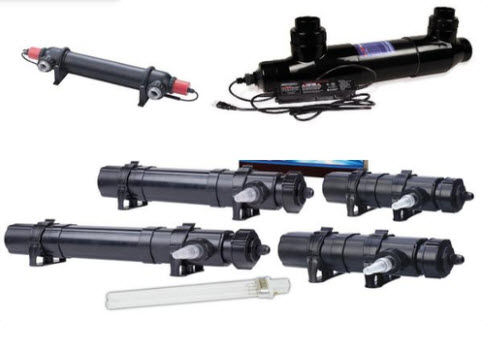
Note all large Universities doing genetic research using zebrafish (460 with millions of zebrafish) use high intensity UV in their facilities as do public aquariums. These units use 225,000 microwatt/cm2/second as a standard to achieve 99.99% sterilization of even tough to kill organisms in a single pass through the UV unit. This works out very roughly to 135 watts of UV for a typical 100-gallon aquarium setup, or 1.35 watts per gallon.
But these zebra fish facilities are using UV to do the flowing:
- First off, they are doing genetic research, so it is vital that these units kill all fish eggs in a single pass through the unit.
- Secondly, they are trying to prevent disease from being passed from one aquarium to another. This also requires a kill in a single pass.
Thus the 1.35 watts per gallon is for single pass sterilization at a very high kill rate, capable of killing ich in a single pass. To kill most bacteria in a single pass would require only 1.35/3 or 0.45 watts per gallon. Because of the Reciprocity Rule in Photobiology this must be modified for the home aquarium. In the home aquarium, with multiple passes per hour, the required wattage to kill must be based on the time it takes an organism to double in population.

Take a bacterium which doubles in population in two hours. To prevent bacteria from taking over the aquarium one would need to kill the bacteria in roughly one hour. In the average 5X turnover aquarium this would be five turnovers of the aquarium. So this would be 0.45 watts per gallon/ divided by 5 or 0.09 watts per gallon of water, or roughly one watt for every ten gallons of water in the aquarium.
Surprisingly UV also often does not reduce the bacterial count in the water. Some types of bacteria can reproduce so fast that they can typically out compete a UV light. This typically ONLY occurs in polluted water with very high dissolved organic compounds (DOCs) in the water. Some types of bacteria reproduce slower and can be controlled by UV.
It will all depend on how often the water goes through the UV unit and the type of bacteria. In a polluted aquarium, a 2X turnover might not reduce the bacterial count while a 8X turnover might well significantly reduce the bacterial count of SOME bacteria.
But we need to emphasize that the main way to reduce the bacterial count in the water should be through the use of large amounts of surface area in the filter with good media and large volumes of media. Biofiltration is many times more effective than UV in keeping bacterial counts down.

Because it takes an ich organism an average of at least 8 hours to get out of the water stream into the fish, an infectious ich trophont goes through the UV unit an average of 48 times. Thus the ich organism is NOT more resistant to the UV than the bacteria and is actually easier to kill, which is a complete reversal of conventional wisdom.
So organisms which multiply rapidly are easily killed by UV even in a single pass and organisms which multiply slowly are killed quite well in multiple passes. Which can be summarized by simply saying UV, even at low wattages, is very effective in the aquarium.


The Effect of UV on Disease
Diana Walstad, the author of the landmark book, “Ecology of the Planted Aquarium” (must reading for any serious planted tank hobbyist) relates on her website how fish tuberculosis (technically mycobacteriosis) was killing all her rainbowfish and how many were sick when she attached a UV system to try and stem the tide. Much to her amazement the plague went away and even the sick fish recovered.
Now I will caution about reading too much into this. Remember, “correlation doesn’t imply causation“. Ms. Walstad’s fish just might have fought off the Fish TB all on their own and might well have done so even with no UV unit. But there is a logical explanation for what happened, just with the caveat that “logical” does not “prove” anything.

Now the obvious question is: how does a fish that already has a severe case of tuberculosis benefit from a UV light? The answer probably lies in the immune systems of the fish. All animal immune systems are limited. They can only fight so much at one time. A fish with tuberculosis in water with a high pathogen count will have to devote a significant amount of its immune system resources to keeping the pathogens in the water at bay and will have less to devote to overcoming the tuberculosis.
Ms. Walstad significantly reduced the pathogen load in the aquarium water with a UV light. Then the fish in her aquarium were probably able to devote all their immune system resources to the tuberculosis and turn it back. Note that it is doubtful that Ms. Walstad significantly reduced the count of some types of bacteria in the water. But the other pathogens were reduced to the point where the fish could handle the loading.
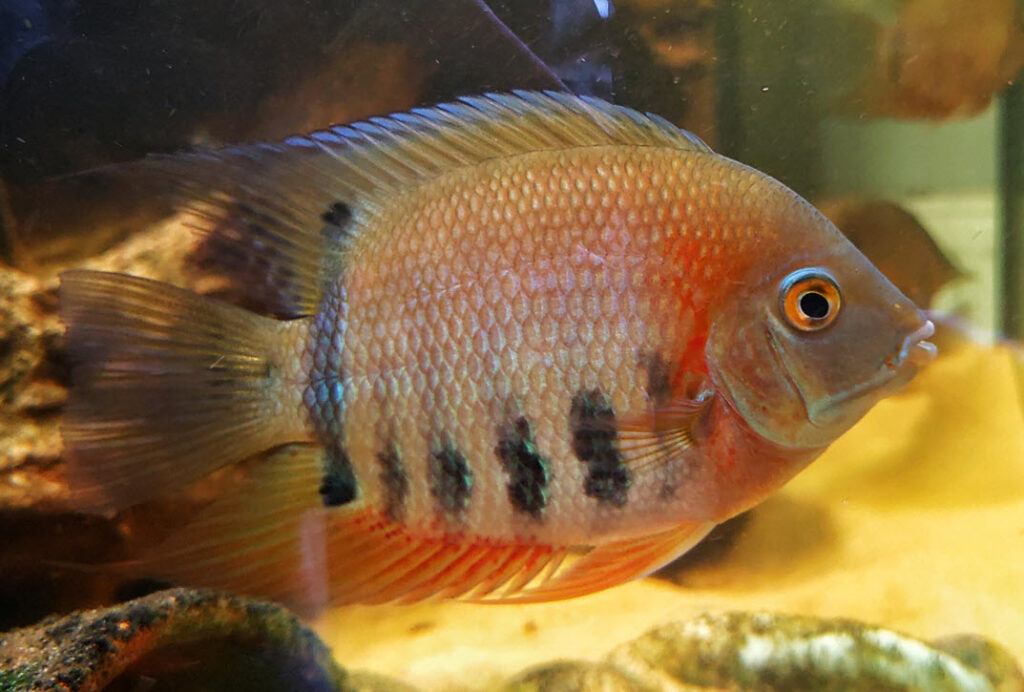
The cause of the tuberculosis outbreak can also be logically deduced. Ms. Walstad admits she overfeeds her fish to provide fertilizer for her plants. When she had her fish TB outbreak she didn’t filter her aquariums. The problem with this approach is that it results in a heavy concentration of bacteria and other organisms in the aquarium water. This heavy immune system load weakens the immune systems of the fish and can result in something like tuberculosis breaking out.
Ms. Walstad subsequently has added “limited filtration” to her aquariums and she has not had another Fish TB outbreak, even though she still overfeeds. Even “limited filtration” will drop the bacteria count down to the point where the fish have significant amounts of immune system resources to devote to warding off fish TB.

This immune system response to bacterial loads is not confined to tuberculosis. It applies to any pathogen of aquarium fish equally. In particular it applies equally well to the pathogen which causes “neon tetra disease” (Pleistophora).
Again, UV is not as effective as large amount of biofiltration in keeping disease at bay. A large filter filled with something like 20 ppi foam, pots scrubbers, or K1 media will do a much better job than UV keeping fish healthy.

Note also that saying UV kills pathogens is not technically correct. Most of the time the UV disrupts the DNA in such a way that the organism cannot replicate and reproduce. But the result is the same, the organism dies without reproducing. So the whole discussion becomes academic.
And there are some “experts” (who also sell high priced UV sterilizers) who say that some UV units, because of their design, only do “clarification” not “sterilization”. This is just marketing hype to sell high priced units. UV stops organisms from reproducing, period.

The Reciprocity Law in More Depth
The concept that slower reproducing organisms suspended in the water column, such as Environmental Mycobacteriosis, Fluke, ich, or “Hexamita“ will be killed by multiple passes through a UV lamp irregardless of the dwell time or flow rate is based on the article “The Reciprocity Rule in Photobiology – a Review”, Schindl, 2001.
The Bunsen-Roscoe law (BRL) of reciprocity states that a certain biological effect is directly proportional to the total energy dose irrespective of the administered regime.
But note that Schindl notes that fast reproducing bacteria such as E. coli do NOT respond to multiple passes of UV and ARE sensitive to dwell times.
Dzidic et al irradiated Escherichia coli with UVC at a total dose of 100 J/m² administered in either a single exposure or in equal fractions separated by 20 minutes intervals of incubation and determined cell survival and mutagenesis. After fractionated irradiation a higher rate of survival was observed compared to acute irradiation.
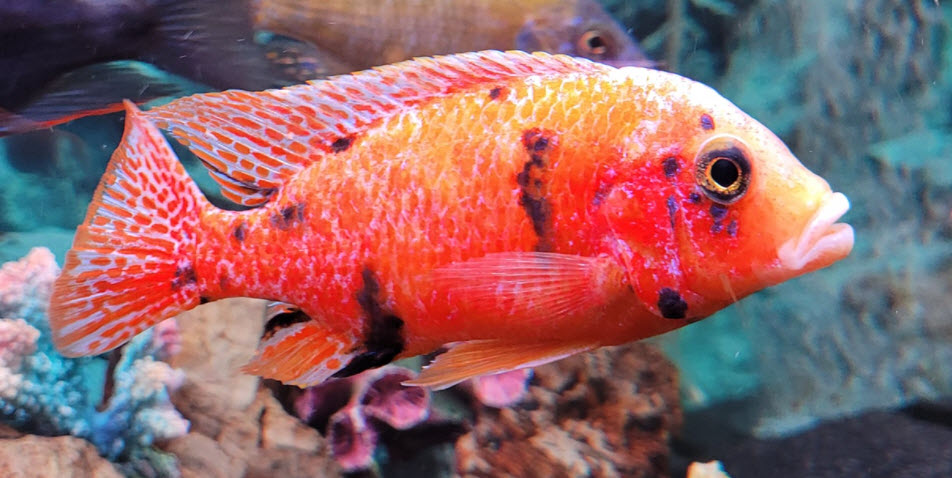
Fast reproducing organisms such as bacteria are NOT well controlled by UV in water with a high nutrient level (i.e. a high dissolved organic compound level). The mechanism is rather obvious. If E. Coli reproduce every fifteen minutes in polluted water, then managing to disable some portion of the E. coli every twenty minutes will have little effect on the E. coli population.
But the effect is limited to fast reproducing organisms. An organism which lives for days, like an ich trophont, will still be killed by frequent short exposures just as well as one long exposure.
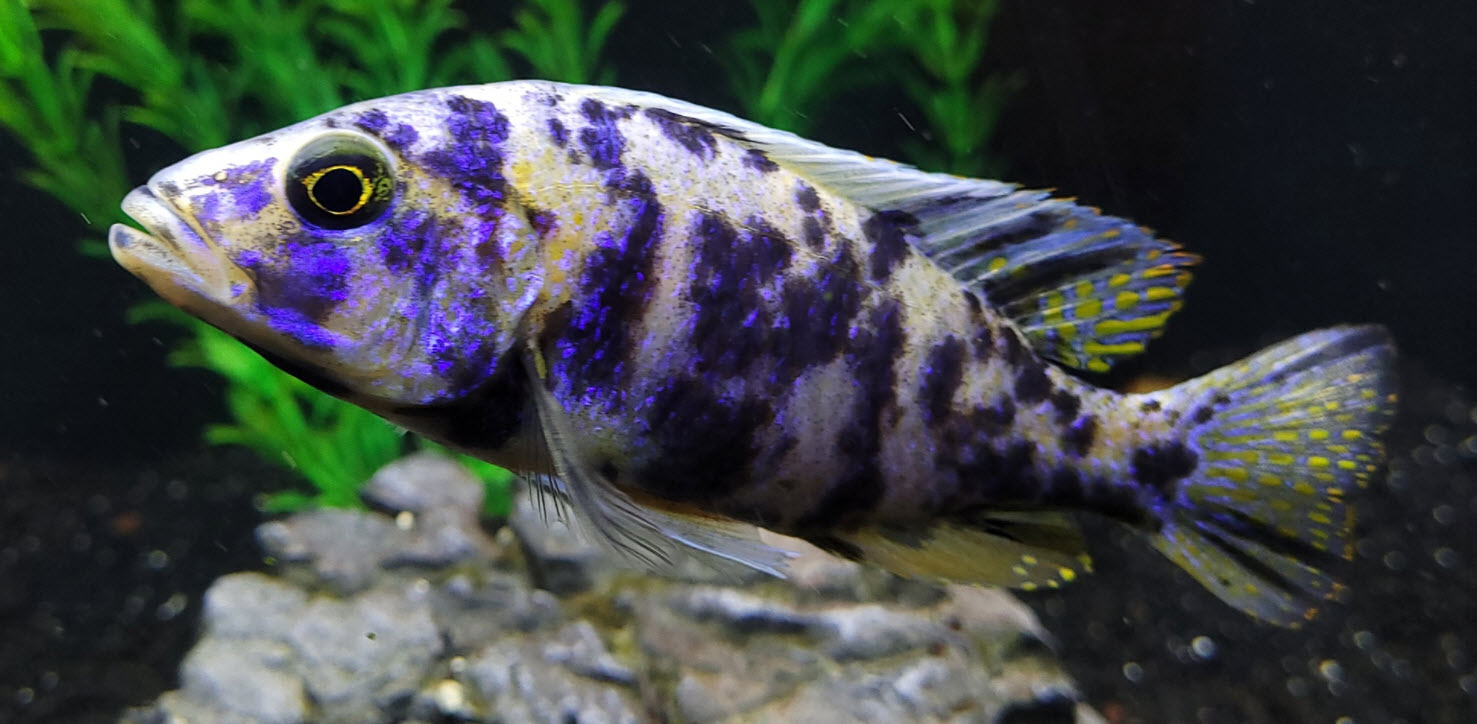
And note that the E. coli experiment was irradiation of E. coli culture in a nutrient rich petri dish. The entire population of the E. coli were irradiated at once. So with the long duration exposure almost ALL the E. coli were killed.
If one puts aquarium water from three polluted aquariums through a slow flow UV unit versus a fast flow UV unit versus no UV exposure, I very much doubt there will be ANY difference in the bacterial populations of the three aquariums. The pool of bacteria in the aquariums is just too big and it will repopulate faster than the UV can kill no matter whether it is slow or fast or none.
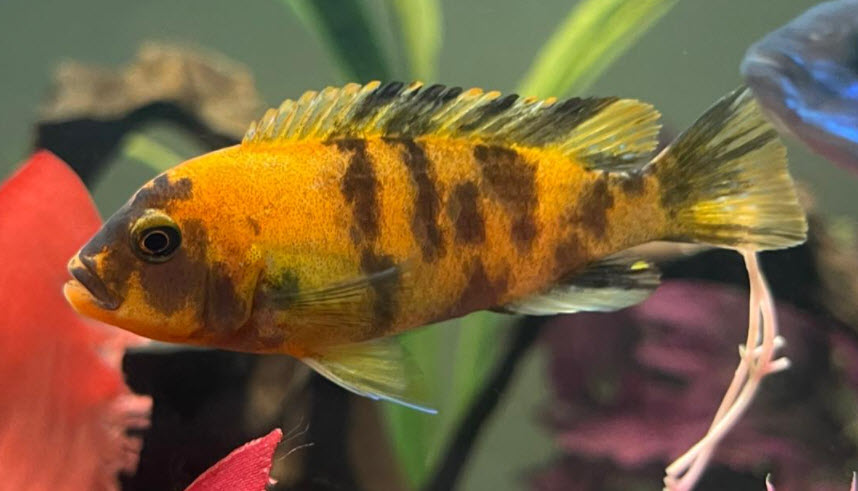
Dzidic et al goes on with:
Interestingly, a larger number of fractions (and a concomitant decrease of dose per fraction) was needed to induce a comparable effect when bacteria were cultured in phosphate buffer compared to cultures with nutrient media. Fractionation had no effect on the number of UV-induced mutations in cells cultured in nutrient media. In contrast, in starving cells the frequency of mutations was reduced with increasing numbers of fractions. These results were explained by the reduced synthesis of repair enzymes in starving cells and provide an example where failure of reciprocity depends on the physiological state (thriving vs. starving) of the irradiated organism.
I. e. the E.coli experiments established that starving E. coli of phosphate made the frequent exposure much more effective. Again, there is a very simple explanation. Staving the e. coli made them only reproduce every few hours. So frequent UV exposure became effective.

Schindl then says:
Forbes et al irradiated hairless mice with constant weekly doses of broadband UV (250-400nm). The weekly doses were either delivered in one single session or split into 3 and 5 equal portions given on 3 and 5 days, respectively. The endpoint of the study was formation of skin tumors. Interestingly, the most fractionated pattern of irradiation was the most tumorigenic. This suggests that at equal doses fractionation with daily irradiation increases carcinogenic potential of UV as compared to intermittent high dose exposure. These results are in accordance with findings from DeGruijl and associates who noted that the total dose delivered in a mouse model for the induction of skin tumors had to be higher if a high daily dose of UV-R (FS40 sunlamps, 280-360nm, peak at 312nm) was used in comparison to lower daily doses. A similar result was obtained by Willis and Menter who exposed hairless mice to filtered solar-simulating radiation (290-400nm) in order to investigate the dependence of carcinogenesis on spectral distribution and dose-regimen. Taken together, these studies consistently demonstrate that time-dose reciprocity is absent for UV-carcinogenesis in mice as at equal cumulative doses intermittent high dose exposure has been found to be less carcinogenic.
Schindl
And the mice experiment is also easily explained. The cells which were exposed to the long duration UV were simply killed outright and thus could NOT mutate. The cells exposed at intervals were not killed (three and five day intervals is a lot of time in which the cells could repair some degree of damage) and could thus survive and mutate.
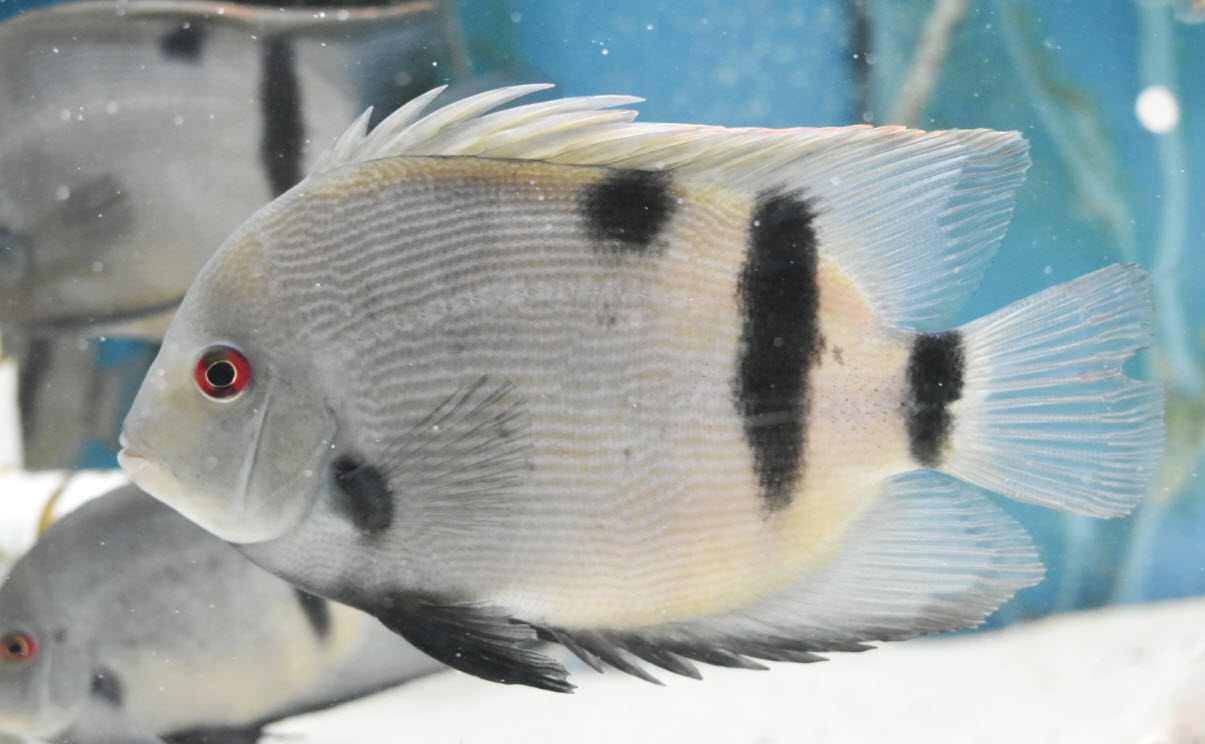
More on UV in the Aquarium
For more general knowledge of UV, including its benefits, click on this link:
Selecting a UV unit is covered in another web page:
Don’t look at working UV-C lamp!


